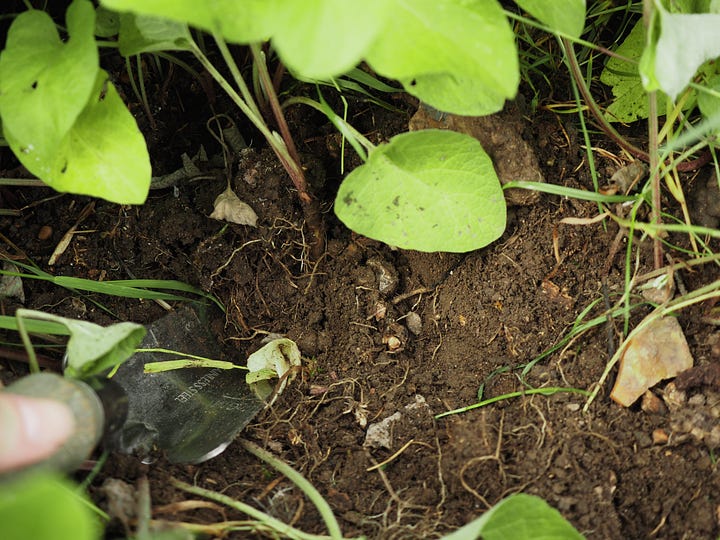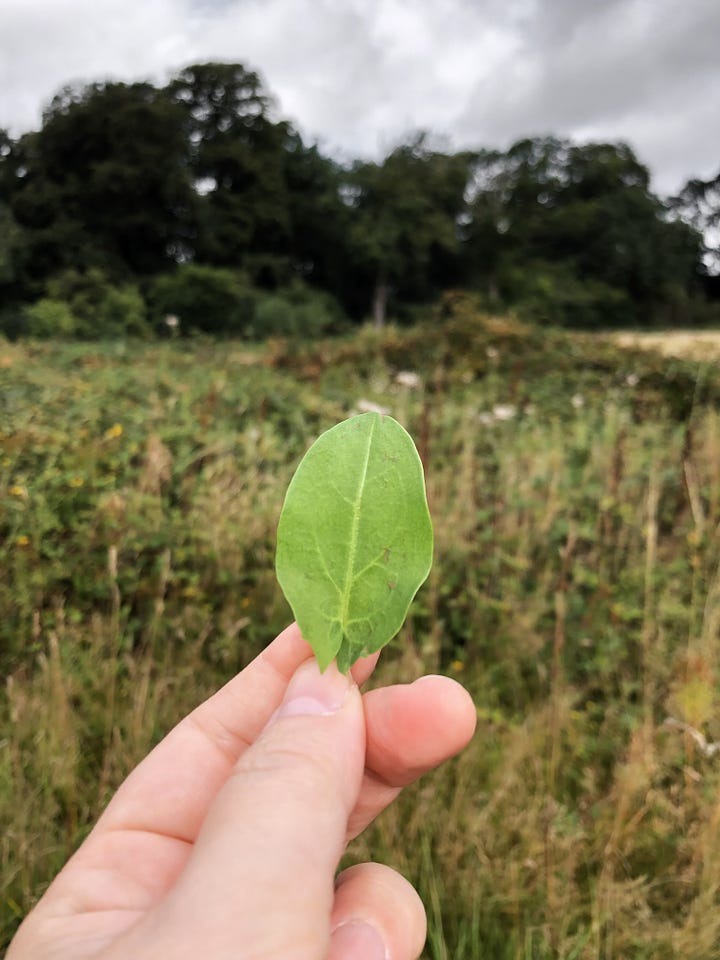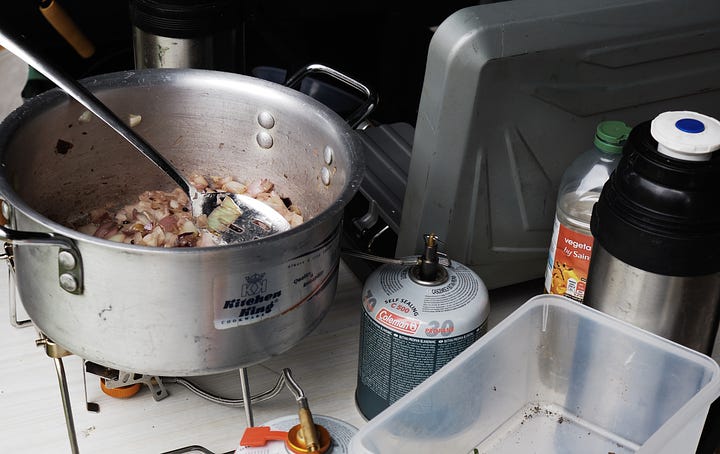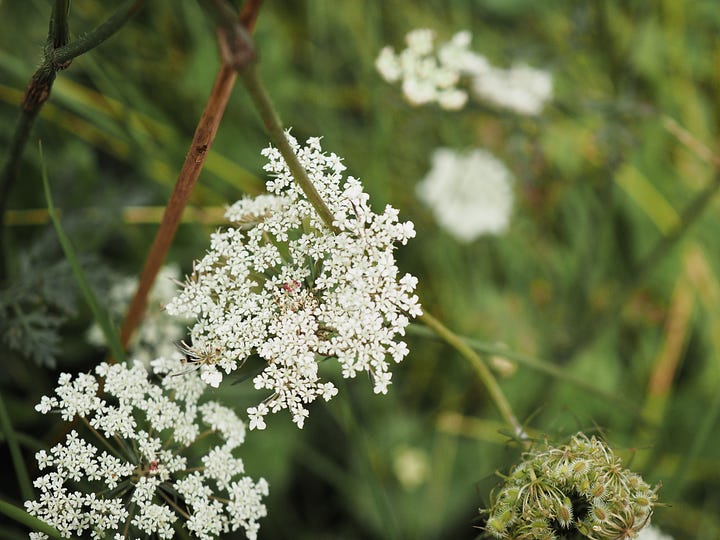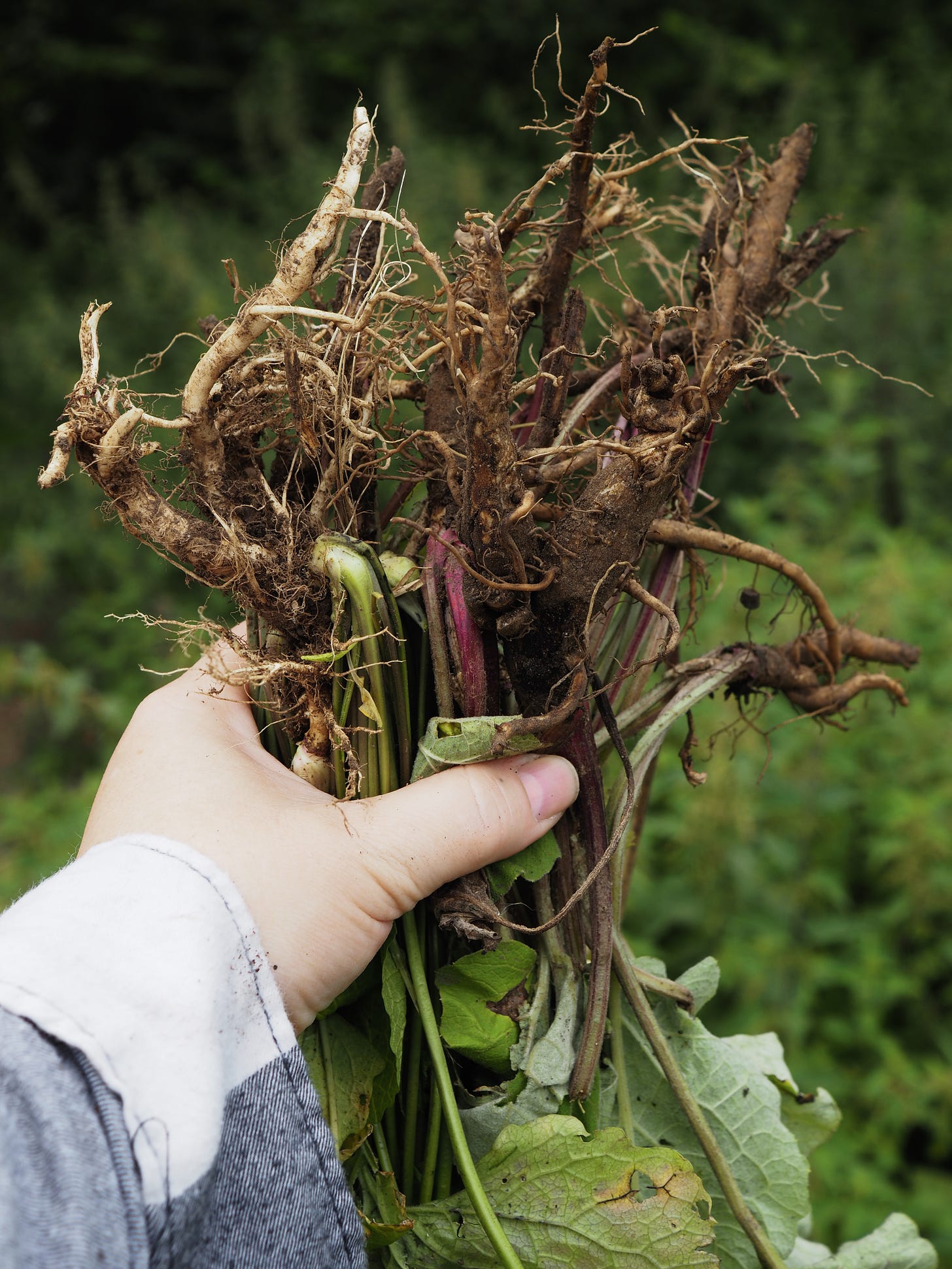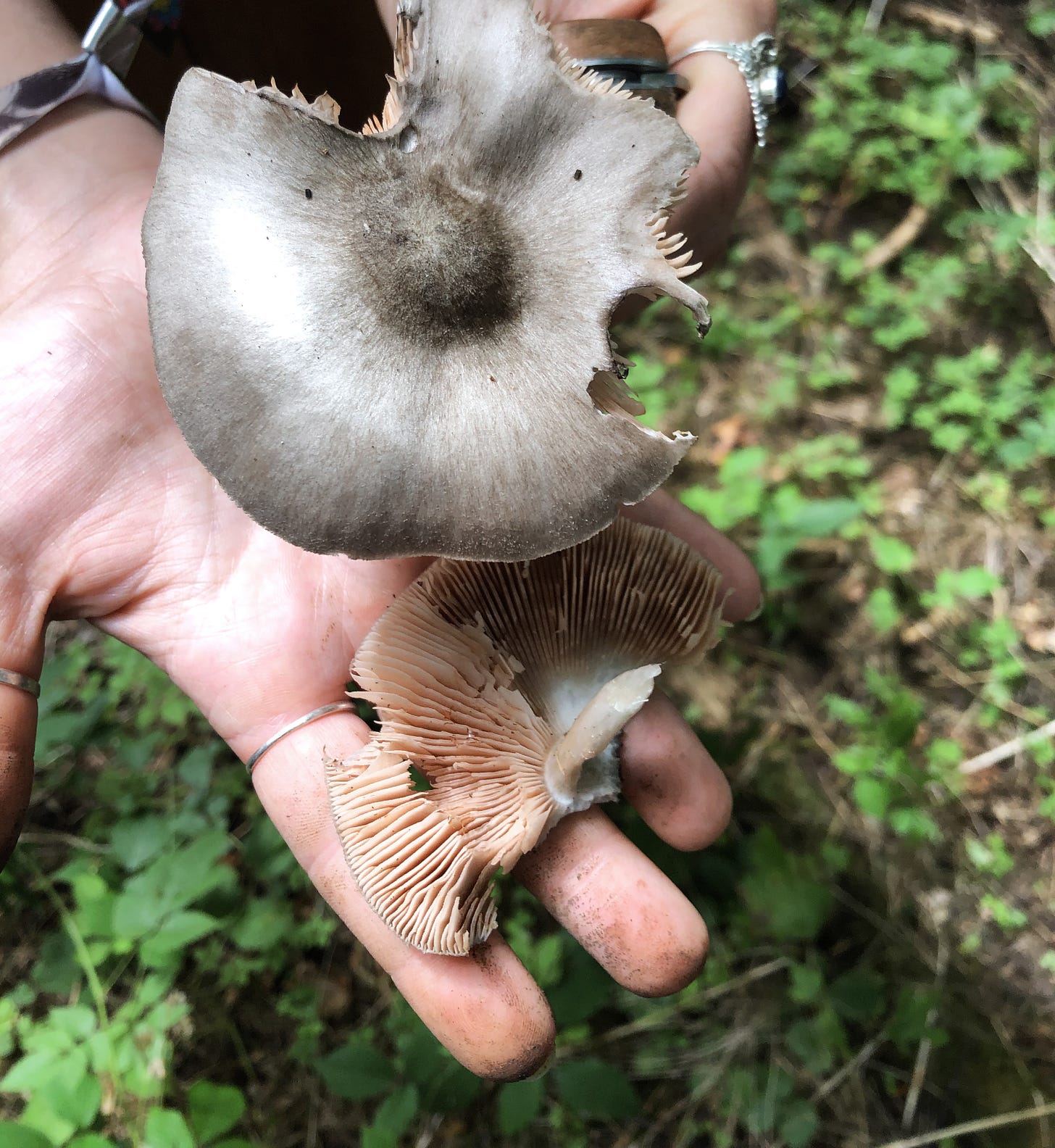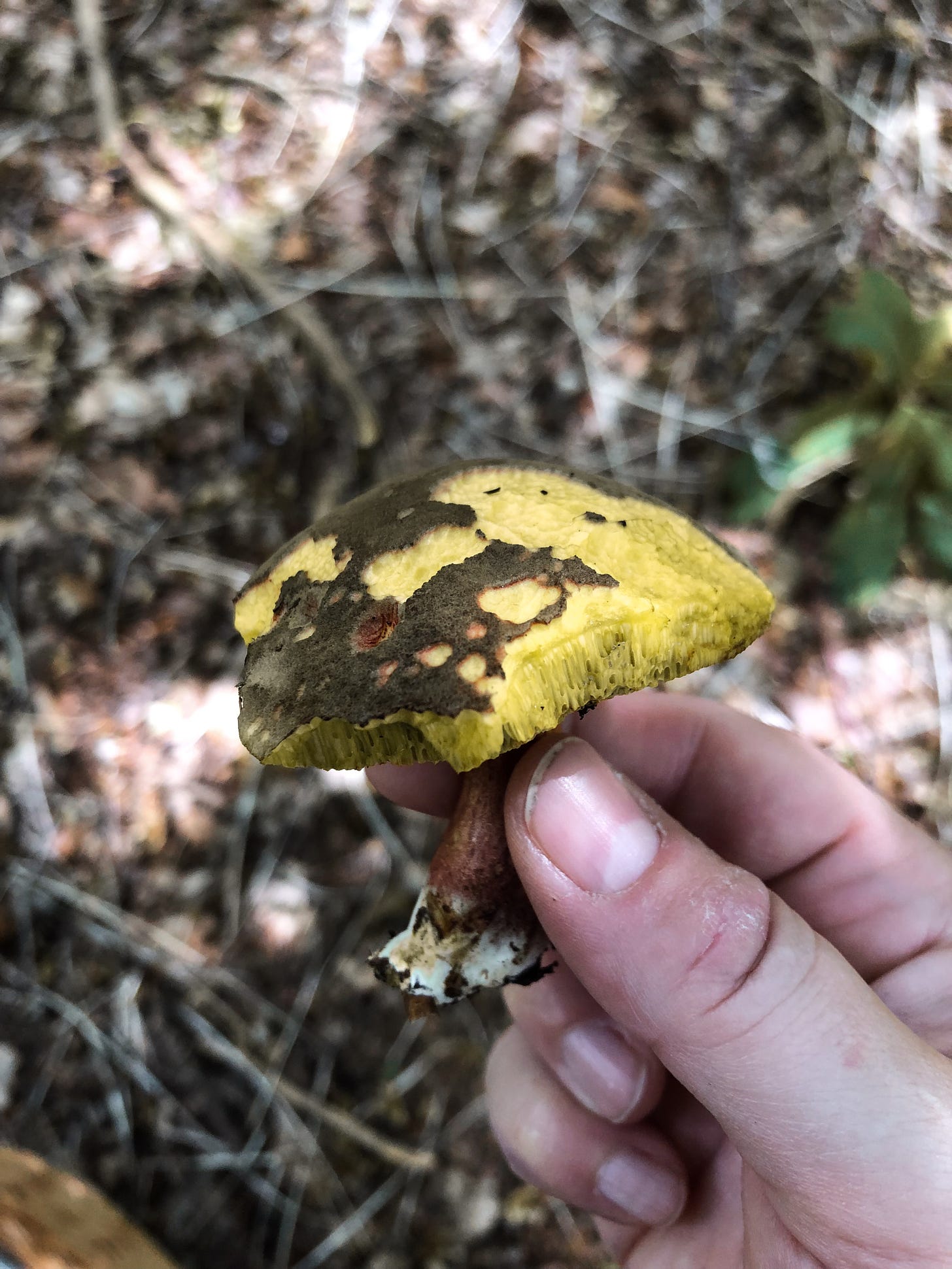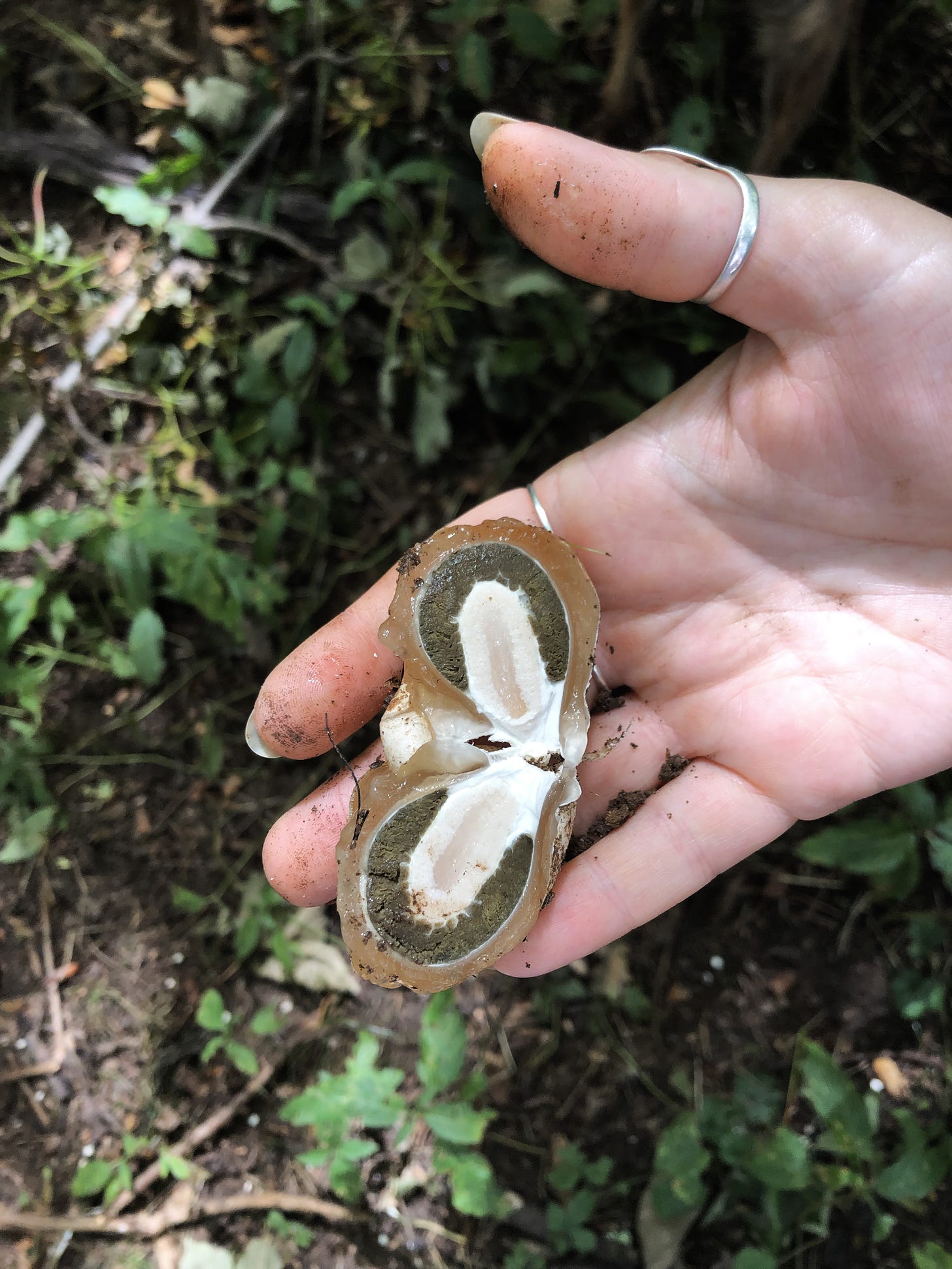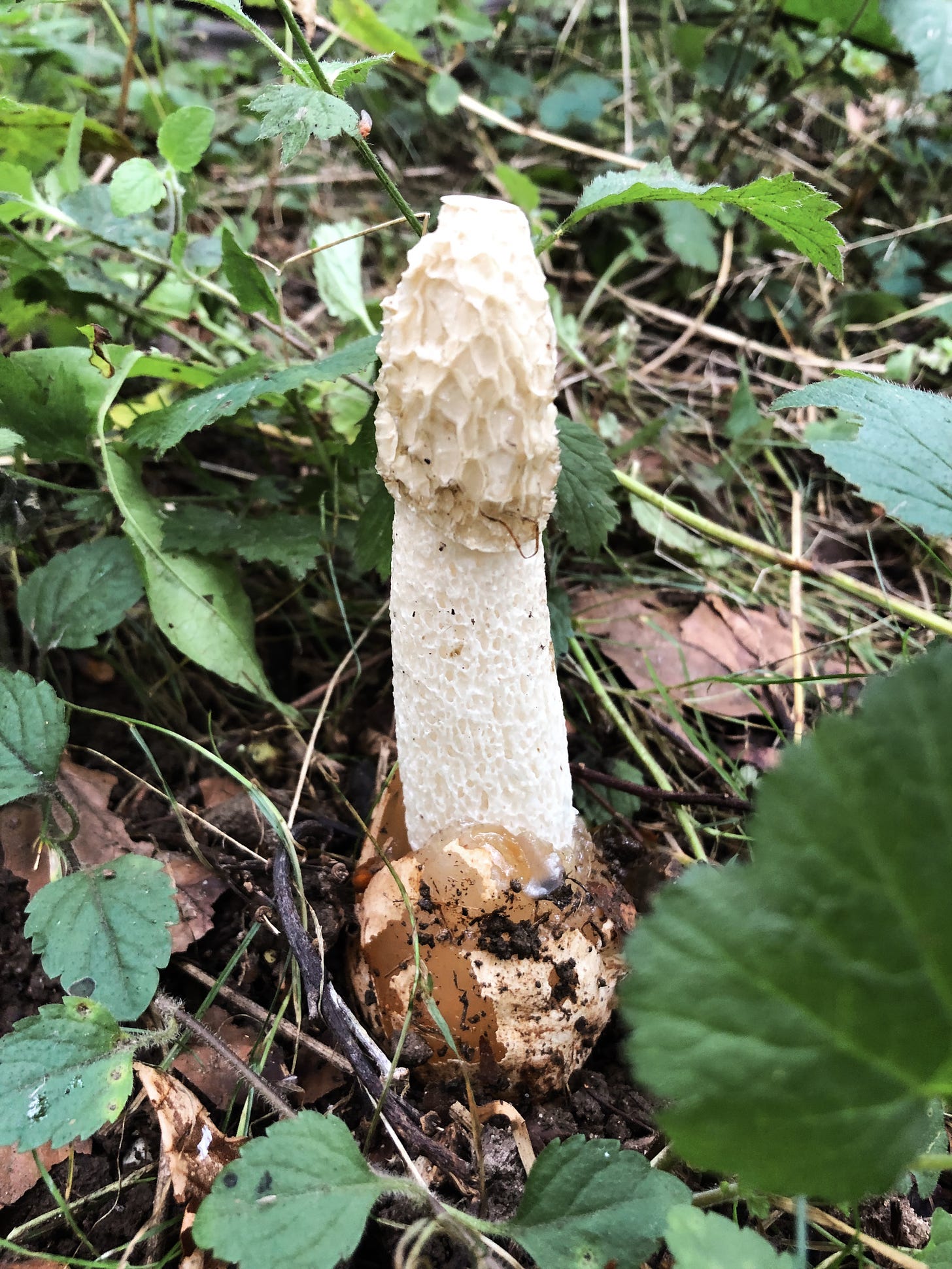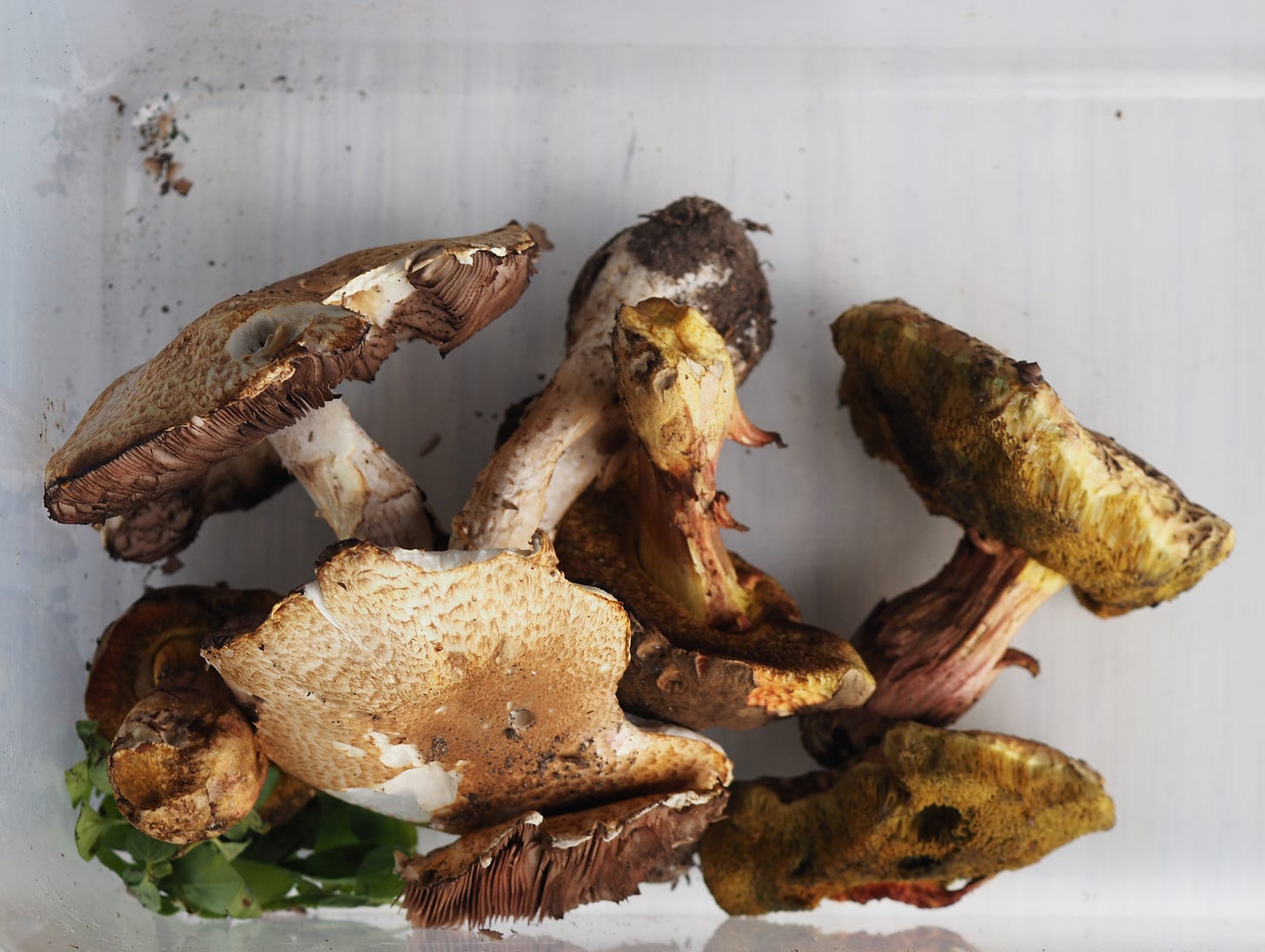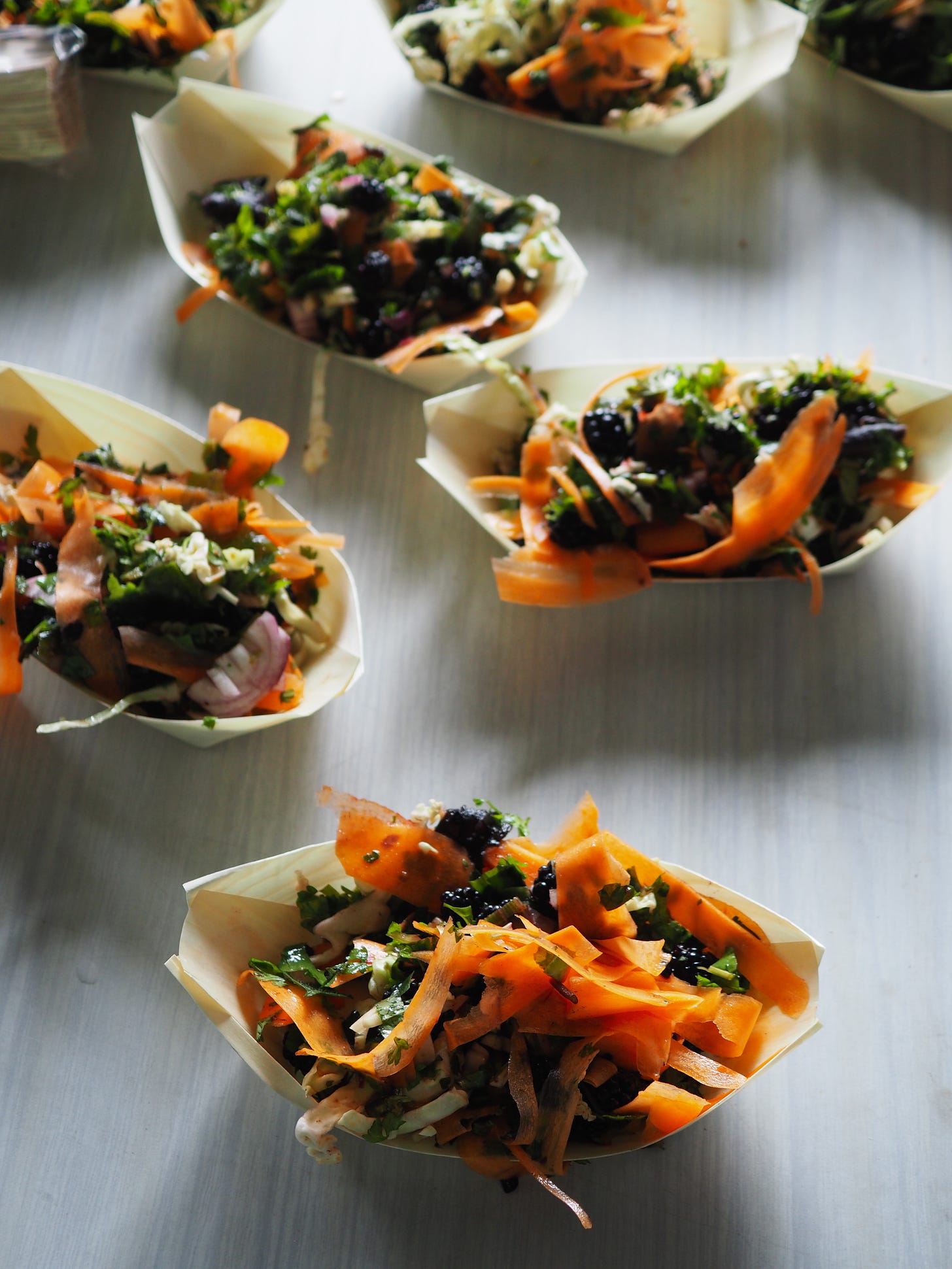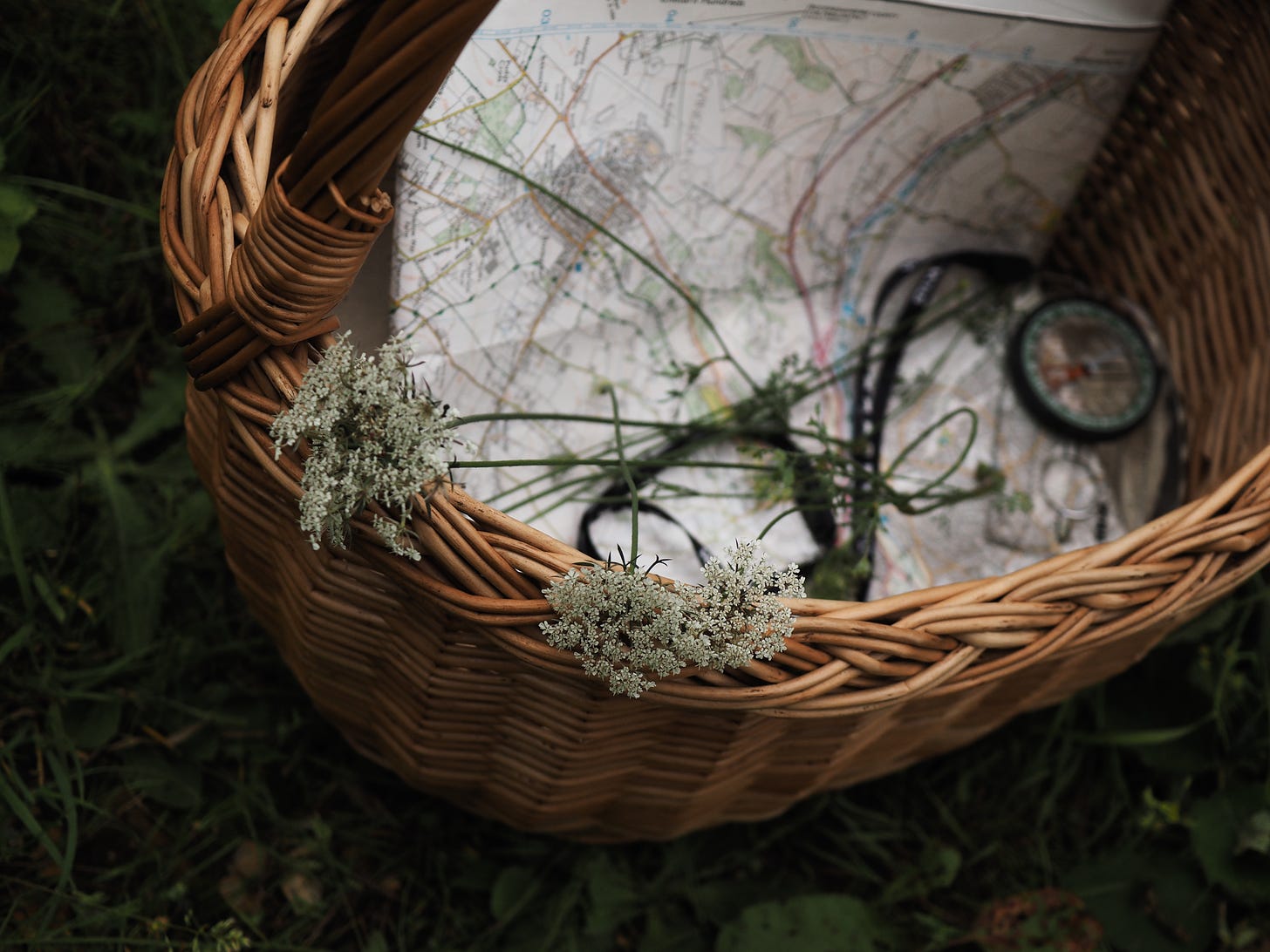Foraging —like many of my interests— is an area where my enthusiasm outweighs my skill. Unlike my other interests though, with foraging it really does matter if you get it wrong. Knowing that the risks need to be taken seriously, and in the interests of living a longer life, I decided to expand my knowledge of wild-grown food with the help of an expert.
Up until this month I had dabbled in a little foraging, mostly with the easy identifiables such as blackberries, wild garlic, hawthorn flowers, nettles and elderflowers. I had also done some reading about so called weeds and their medicinal properties, like feverfew, comfrey and yarrow. I had got as far as trying to grow some of them in my own little patch, but they didn’t seem to like my cultivation efforts, so they never grew abundantly enough to be harvested. It didn’t put me off though, and a couple of weeks ago, I finally booked myself onto a foraging course. I managed to snaffle the last spot on a one day course in the new area that I’ll be moving to next week. It made sense to learn about what would be available in the woods and fields around my soon-to-be home.
As a quick side-note, if you live in or near London, Bethnal Green Nature Reserve has a wonderful medicine garden. It’s an old bomb-site that has gone back to nature and is brimming with biodiversity thanks to its passionate local team.
The foraging day itself was full-on and great fun. We didn’t have many breaks as there was so much to find and gather, but it was worth it as I learned about another 18 edible plants and fungi: common sorrel, pineapple weed, common hogweed, dandelion, puffballs, Queen Anne’s lace, sloes, burdock, Jack by the Hedge, Herb Robert (Stinking Bob), Red Cracking Bolete, Prince Mushroom, Matt Bolete, wild marjoram, Colt’s Foot, Dryad’s Saddle, rosehips and elderberries. I love the names of them as much as anything.
After a day of gathering, we headed back to the tents to cook what we’d found. Our foraging guide had bought her camping stove and equipment, so we set to work slicing and stirring. While some of the others in the group watched over the pans, I went to dig up more burdock and Jack in the Hedge roots for the main course (we did get the landowner’s permission first). Much to my surprise we made a three course meal. Some elements of the meal were brought in, such as rice noodles which we ate with our fully foraged sauce, and carrots were added to the foraged salad. The preparation and cooking was new to me because normally I just nibble from hedges as I go by, and mostly eat raw. When I get a bit more time, I’d love to cook some of the plants we found.
I should add here that we also learned about some of the plants and fungi to avoid, such as the Amanitas, and poison hemlock — which I’m fairly sure I’ve accidentally picked in the past, thinking it was either cow parsley or sweet cicely. A note to myself as a timely reminder to never munch on a hunch.
During our wander, I found the fungus that’s pictured on the back of Tori Amos’ Little Earthquakes Album cover. My life is now complete. Apparently in the egg stage the stinkhorn is edible, which I find surprising because it looks and smells putrid. According to local legend, a concerned parishioner thought the stinkhorns were signs that the devil was coming up from underground, so they cut them all down not realising that it would help them to spore far and wide, causing even more to pop up.
Sharing a meal made from food that we’d gathered then cooked ourselves was a really lovely experience. But I enjoyed the wandering and the finding just as much. Having my hands in the soil and my nose pressed into unknown leaves is my idea of joy. I couldn’t believe how many edible plants we found in just a few hours, which just goes to show how we’ve barely scratched the surface of what’s actually growing all around us. I can’t wait to find out more….
